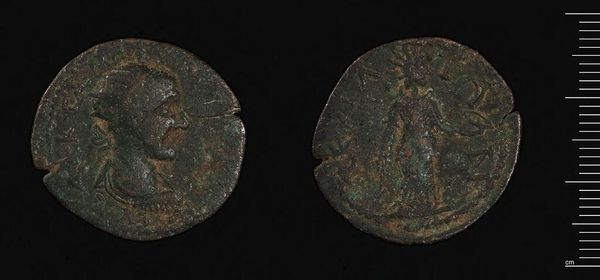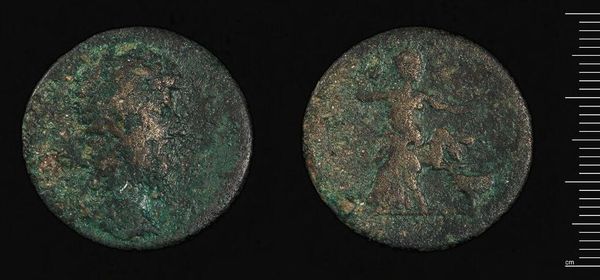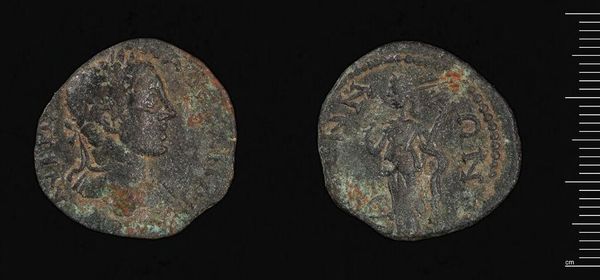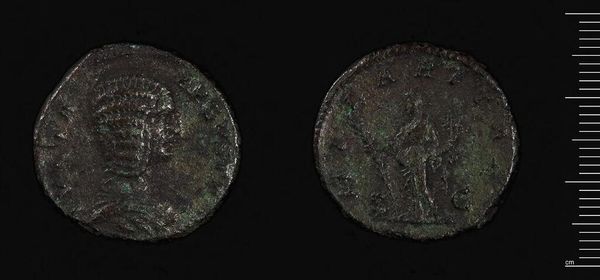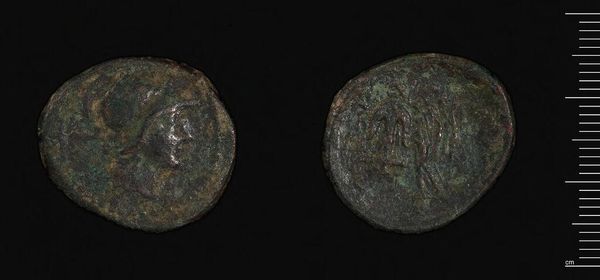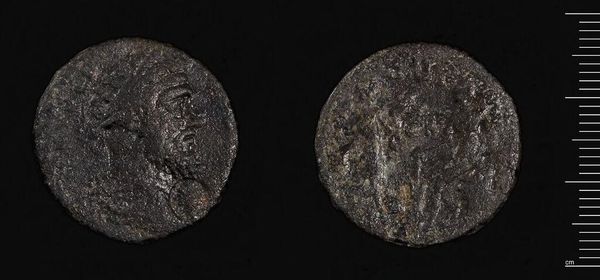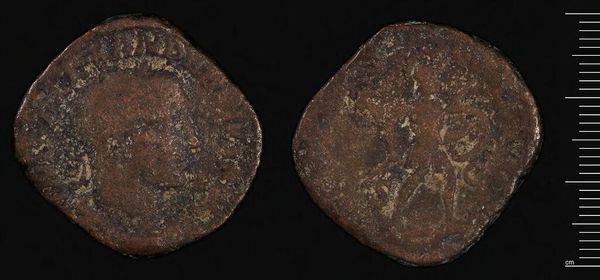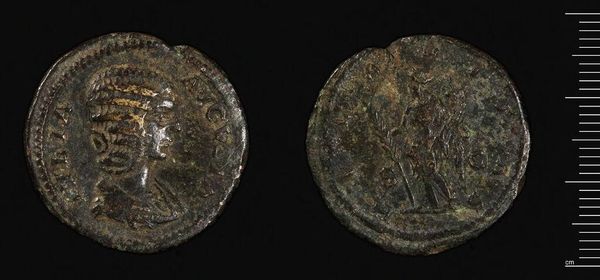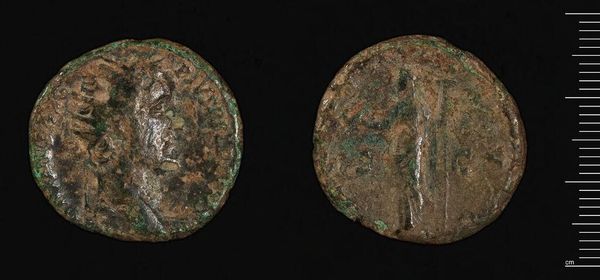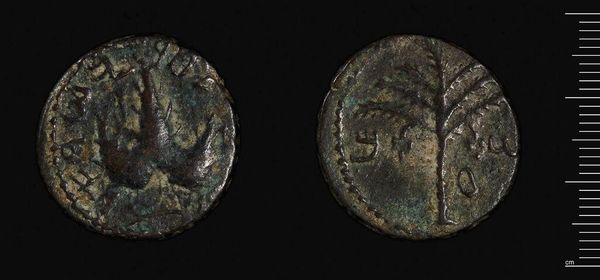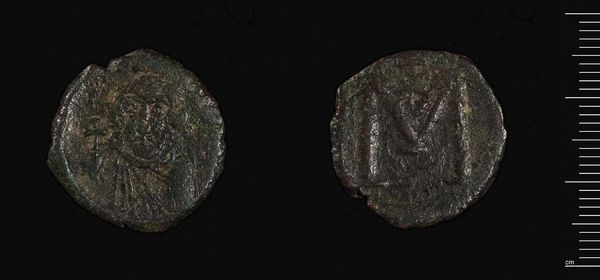
Dimensions: 13.15 g
Copyright: CC0 1.0
Curator: This is a sestertius, a bronze coin minted during the reign of Severus Alexander. It is now held in the collection of the Harvard Art Museums, and it weighs about 13 grams. Editor: Its aged patina gives it a somber tone, don't you think? The emperor's profile is eroded, a visual marker of time's relentless passage and, symbolically, the impermanence of power. Curator: Absolutely. Roman coinage was essentially mass propaganda. Consider how the emperor's image and inscribed titles aimed to project authority and legitimacy, reinforcing dynastic narratives for a diverse population. Editor: And that imagery! The symbols chosen for the reverse side were carefully curated to evoke cultural memory and loyalty. It’s a visual language intended to communicate specific values and aspirations of the empire. Curator: Yes, though these coins were also tools of economic control, they circulated far beyond the elite, impacting social relations at every level. Coins are material culture that speaks to identity, power, and exchange. Editor: Examining the sestertius through iconography illuminates how these coins were not simply currency, but potent carriers of meaning, influencing how people perceived their world. Curator: Viewing it through a socio-political lens reminds us that even small objects can reveal larger historical dynamics of empire.
Comments
No comments
Be the first to comment and join the conversation on the ultimate creative platform.
